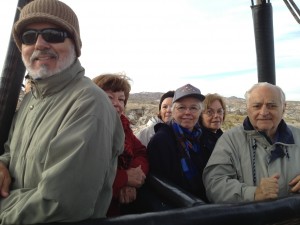Modern Istanbul, Ancient Turkey—MIT Travel Makes New Connections
-
-
slice.mit.edu
Filed Under
Recommended

The meeting of Chip Wood ’56, SM ’57 and Jack Cinque SM ’53 was just one of many new connections made during the MIT Alumni Travel Program’s trip, Turkish Treasures: The Lost Worlds of Anatolia, Oct. 19–Nov. 2.
Both men graduated from MIT in chemical engineering in the 1950s, landed their first jobs for oil companies in Texas City, TX, and a few months later, got fixed up for the company’s spring dance with blind dates—whom they later married. And they met for the first time two weeks ago as part of the 23 alumni and guests exploring modern and ancient Turkey.
The trip began in Istanbul, a vibrant city offering spectacular ancient sites such as the Blue Mosque as well as a modern building boom and international influence in politics, trade, and art.

As a staff host, I accompanied the travelers and our guide, Turkish archaeologist Gokhan Ozagacli, as we toured the 6th century Hagia Sophia, now a museum, sailed the Bosphorus strait, bargained in the Grand Bazaar, and viewed treasures at Topkapi Palace, home of Ottoman sultans.
And then we flew to Gaziantep, the ancient Silk Road city that brims with archeological ruins and boasts the world's best pistachios and baklava. The ancient world was all around us from sites the Biblical Abraham visited to exquisite mosaics excavated from the ancient Roman city of Zeugma to the Assyrian fortress of Rumkale Castle, guarding a strategic turn on the Euphrates River.

In nearby Urfa, we visited Gobekli Tepe, the oldest known place of worship dated to 9800 B.C., and the next day we hiked half a mile to the peak of Mount Nemrut, where giant limestone heads, carved in the first century B.C., regard the 7,000 foot visa.
Later in Cappadocia, we explored cities carved out of rock, and many of us floated via hot air balloon over fairy chimney dwellings. One moonlit night, we ventured into a 13th century caravanserai for a dervish performance of music and whirling dancers. And that's just a taste of our adventures.

Besides expanding our perspectives, this trip nurtured new friendships among the travelers. Mike Feuer '64 and Jack Russell '68 began working on an astronomy problem (how can you calculate the amount of daylight knowing only the latitude and date of any locale?) as we drove through the countryside. We also made new connections by inviting MIT graduates living in the Ankara area to dinner. The conversations were fabulous—our weeks in Turkey made us eager to know more about contemporary life and many local alumni were delighted to meet each other for the first time. Ah, global connections! It's so MIT.
Learn more Turkish Treasures (next scheduled Oct. 4-19, 2013) and other MIT Alumni Travel Program adventures.







